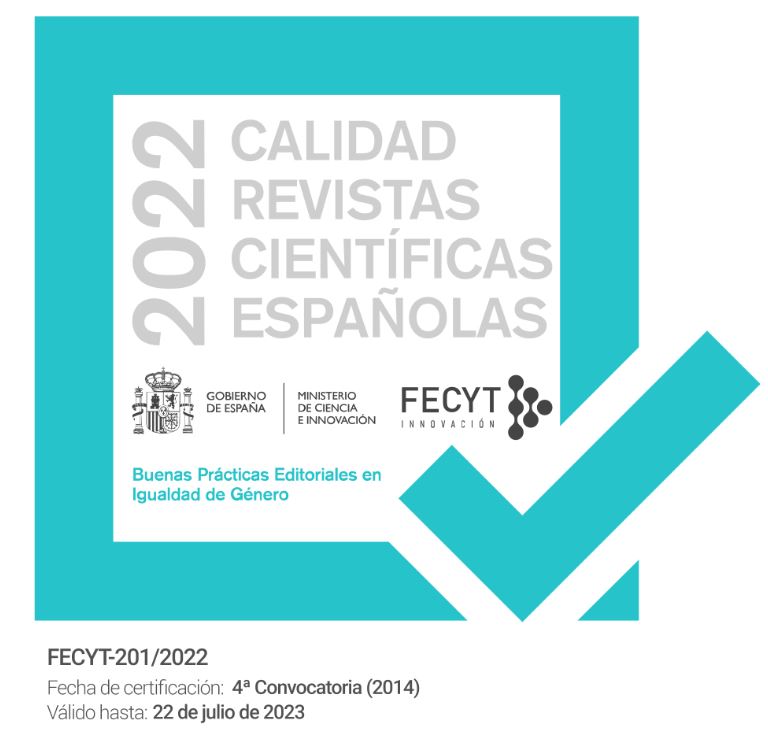The Use of Doulingo in Learning English as a Foreign Lan-guage
DOI:
https://doi.org/10.30827/eticanet.v22i2.24417Keywords:
Duolingo, EFL, communicative competencies, motivationAbstract
The current research analyzes the use of Duolingo as a tool for learning English as Foreign Language (EFL) and the benefits of such usage in its teaching, specifically in the acquisition of the communicative competencies described in the Common European Framework of Reference for Languages (CEFR). The sample is composed of 332 11th grade students from four Educational Institutions of the Education Secretariats of the Department of Boyacá and the municipality of Duitama, Colombia. The study was conducted under the Descriptive quantitative methodology: on the one hand, the quantitative part was carried out with the application of a pre- and post- questionnaires to measure the students' communicative competencies in English before and after implementing a Didactic Unit based on the use of Duolingo for the experimental group and other strategies for the control group. The study concluded that the use of Duolingo is favorable in the teaching of English and generates motivation in the students.
Downloads
References
Buendía, L., Colas, P. y Hernández, F. (1998) Métodos de investigación en psi-copedagogía. McGraw-Hill. https://www.icmujeres.gob.mx/wp-content/uploads/2020/05/LEONOR-Metodos-de-investigacion-en-psicopedagogia-medilibros.com_.pdf
Caamaño, A., & Calvete, M. (2020). La enseñanza del inglés como lengua de comunicación internacional desde la perspectiva de las políticas cultura-les y lingüísticas. Entramados: educación y sociedad, 7(8), 230-236. https://docs.google.com/viewerng/viewer?url=http://fh.mdp.edu.ar/revistas/index.php/entramados/article/viewFile/4546/4828
Cajar, F., & Rojas, C. (2017). Influencia de las Tic en el desarrollo de compe-tencias comunicativas del idioma inglés en los estudiantes del grado quinto de la Institución Educativa Montessori sede primaria de Pitalito–Huila (Tesis de maestría). Universidad privada Norbert Wiener, Lima, Pe-rú.
Consejo Americano para la Enseñanza de Idiomas Extranjeros (ACTFL) (agos-to, 2020). Estándares de preparación mundial para el aprendizaje de idiomas. https://www.actfl.org/resources/world-readiness-standards-learning-languages
Consejo de Europa (2002). Marco común europeo de referencia para las len-guas: aprendizaje, enseñanza y evaluación. Madrid: MCED y Anaya. https://cvc.cervantes.es/ensenanza/biblioteca_ele/marco/cvc_mer.pdf. 28/11/ 2018.
Consejo Nacional de Supervisores Estatales de Idiomas (NCSSFL). (Mayo, 2020). Declaraciones NCSSFL-ACTFL Can-Do. https://ncssfl.org/linguafolio2020/2017-can-do-statements/
Circular 020.Ministerio de Educación Nacional. Por la cual se establecen medi-das adicionales y complementarias para el manejo, control y prevención del Coronavirus (COVID 19). 16 de marzo de 2020.
Icfes (2018). Cuadernillo de preguntas Saber 11° Prueba de inglés. https://www2.icfes.gov.co/documents/20143/490699/Cuadernillo+de+preguntas+Saber+11-+Ingl%C3%A9s.pdf/6dce6452-3317-cd8d-903b-312dfd366d29
Gavarri, S. (2016). El aprendizaje de lenguas extranjeras mediado por las TIC: Aprender inglés con Duolingo. El toldo de Astier, 7(12), 56-65. http://www.memoria.fahce.unlp.edu.ar/art_revistas/pr.7199/pr.7199.pdf
González, P. (2018). Duolingo como Recurso didáctico para mejorar el proceso de aprendizaje del inglés en los estudiantes del quinto grado en la es-cuela Miguel Riofrío periodo septiembre 2017-junio 2018 (tesis de pre-grado). Universidad nacional de Loja, Ecuador. https://dspace.unl.edu.ec/jspui/bitstream/123456789/20814/1/TESIS%20PAMELA%20GONZ%c3%81LEZ.pdf
Kukulska, A., Norris, L., & Donohue, J. (2015). Mobile pedagogy for English language teaching: a guide for teachers. British Council. http://oro.open.ac.uk/43605/1/__userdata_documents3_lemn3_Desktop_E485%20Mobile%20pedagogy%20for%20ELT_FINAL_v2.pdf
Ministerio de Educación Nacional de Colombia (2016), Informe de gestión 2016, p. 275 recuperado el 11 de enero de 2018 de https://www.mineducacion.gov.co/1759/articles-261032_recurso_20.pdf
Ministerio de Educación Nacional (2017). Plan Nacional Decenal de Educación (PNDE) para la Vigencia 2016- 2026. http://eduteka.icesi.edu.co/pdfdir/men-pnde-2017.pdf
Murillo, J. (2011). Métodos de investigación de enfoque experimen-tal. https://www.postgradoune.edu.pe/pdf/documentos-academicos/ciencias-de-la-educacion/10.pdf
Otzen, T., & Manterola, C. (2017). Técnicas de Muestreo sobre una Población a Estudio. International Journal of Morphology, 35(1), 227-232. https://scielo.conicyt.cl/pdf/ijmorphol/v35n1/art37.pdf
Paucar, S., & Medina P. (2021). Estrategia metodológica basada en tecnologías de la información y comunicación en expresión oral del idioma inglés. INNOVA Research Journal, 6(1), 111-128. https://revistas.uide.edu.ec/index.php/innova/article/view/1463/1830
Romero, Á. (2016). Duolingo la aplicación más fiable para aprender y certificar un idioma. http://reposital.cuaieed.unam.mx:8080/xmlui/bitstream/handle/20.500.12579/4820/VE16.579.pdf?sequence=1&isAllowed=y
Secretaría de Educación de Boyacá. Secretaría de Educación de Duitama (2020).
Vargas, G. (1999). Filosofía, Pedagogía, Tecnología. Universidad San Buena-ventura. https://pdfcoffee.com/filosofia-pedagogia-tecnologiaocrpdf-pdf-free.html
Published
Issue
Section
License
The authors who publish in this journal agree to the following terms: The authors retain the copyright and grant the journal the right to be the first publication of the work as well as licensed under a Creative Commons Attribution License that allows others to share the work with an acknowledgment of the authorship of the work and the initial publication in this magazine. Authors are allowed and encouraged to disseminate their work electronically (for example, in institutional repositories or on their own website) before and during the submission process, as it may lead to productive exchanges as well as further citation. Earliest and greatest of published works (See The Effect of Open Access).














